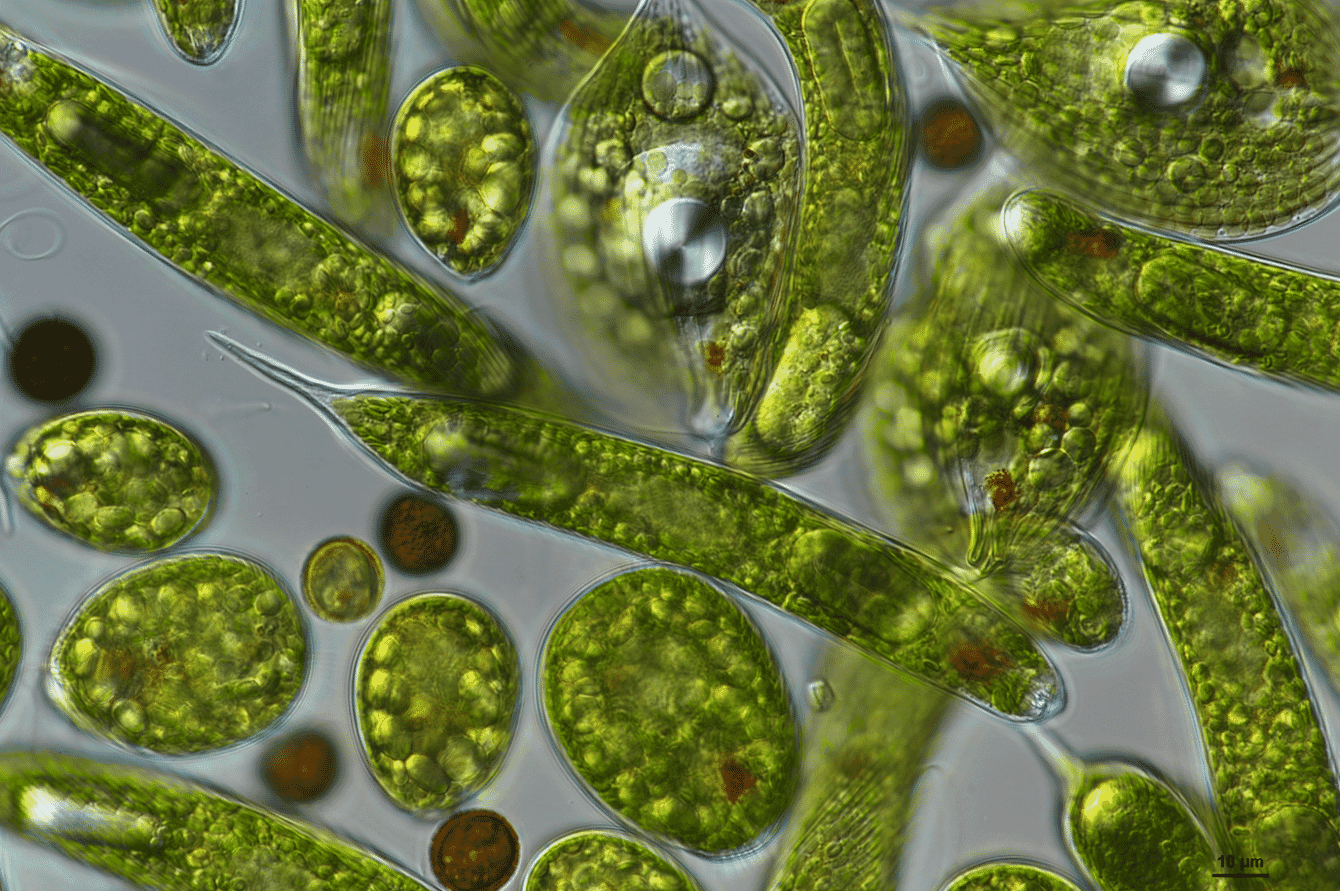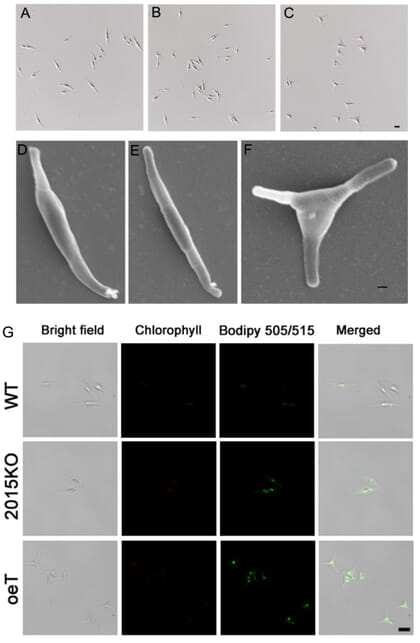
Different algae species are being used in the aquaculture and biofuel industries © Bozena Zakrys
Researchers with the Institute of Oceanology at the Chinese Academy of Sciences (IOCAS) have found a gene that could enhance P. tricornutum’s status in the aquaculture industry and boost its utility as a biofuel. Though the diatom shows great potential for both sectors, producers cannot cultivate it at a large scale because it can be easily contaminated by algivorous zooplankton. Researchers have been using genetic techniques to overcome this challenge.
A team of researchers led by Dr Wang Guangce from IOCAS has reported that overexpression of a novel gene allows P. tricornutum to develop high grazing resistance – letting it withstand challenges from zooplankton contamination. The gene also boosts the diatom’s lipid content, making it useful for aquaculture diets. Their findings have been published in Biotechnology for Biofuels and Bioproducts.

Fig. 2 2015KO (E), and oeT (F) strains. Localisation of lipid bodies in the WT, 2015KO, and oeT strains after staining with BODIPY 505/515.
After several years of trial and error, the researchers found a novel gene (ID: 7202015, hereafter called Pt2015) in P. tricornutum. The team used CRISPR/Cas9 gene editing technology to knock out Pt2015, and found that there was no significant difference between Pt2015KO (Pt2015 knockout line) and wild type in cell morphology and growth.
They found that overexpression of Pt2015 can lead to the transformation of cell morphology of P. tricornutum from fusiform morphotype to triradiate morphotype with special spatial structure, indicating that Pt2015 protein is a positive trigger factor for the transformation of cell fusiform to triradiate of P. tricornutum.
They also found that the economic characteristics of the triradiate strain caused by overexpression of Pt2015 were extremely stable. The triradiate strain demonstrated a three-dimensional three radial pattern and had obvious resistance to algivorous microzooplankton – in this case, an amoeba.
"Moreover, the total lipid content in triradiate strain cells is about 30 percent higher than that of the wild type, and the growth rate was no different from that of the wild type," said Gao Shan, first author of the study.
"The triradiate strain not only improves our understanding of morphotype conversion in diatoms, but also demonstrates potential applications for large-scale cultivation of P. tricornutum," said Professor Wang.




